The Fight for Women’s Voting Rights
November 8th will be a very important day for women’s voting rights. On this day, millions of women will go to the polls in the United States and cast their votes for local and national officials. Millions have already sent in absentee ballots. Some of these women, like 98-year-old Estelle Schultz, were born before women won the right to vote in 1920. They will always think about the struggle, danger, and violence women endured almost 100 years ago to secure that right. Imagine showing up to a polling station, ready to cast your vote, and being turned away, threated, or even killed. Imagine if your right to vote was taken away. Women in Afghanistan and Pakistan have been winning and losing the right to vote for decades.
Voting in Afghanistan
Women in Afghanistan earned the right to vote after the country won independence from Britain in 1919, one year before U.S. women were allowed at the polls. Under the reign of King Amanullah Khan, Afghan women received equal rights, including the right to vote. Khan created other reforms for women including the Family Code Law, which banned child marriage, and he granted women the right to choose their husbands. During the decade Khan was in power he created Afghanistan’s first constitution, which abolished slavery, created a legislature, guaranteed secular education, and instituted equal rights for men and women.
In 1929 tribal leaders, who were increasingly agitated at the reforms Khan had introduced, forced him to flee the country and claimed the throne for themselves. Many of Khan’s reforms were quickly overturned and Afghanistan returned to Sharia law with a monarchy and no voting rights for anyone for nearly 40 years.
Women were once again granted voting rights in 1964 after a new constitution marked the next era of modern democracy. Along with voting rights, women were allowed to run for office. Despite several government coups and changes in power, over the next decade freedoms for all Afghan citizens were increased. Women were encouraged to get an education and vote, at least in the cities.
In 1979 the Soviet Union toppled the government and began an occupation that lasted a decade. The Soviet occupation was not welcomed or accepted by most Afghans, especially in the more rural and mountainous regions. The United States took advantage of the opportunity to weaken their Cold War adversary by flooding the region with money and arms to support the guerilla fighters, or mujahedeen, who continued fighting the Soviets. Many of these fighters were from conservative, tribal areas where men and women had separate and distinct roles in society.
On May 15, 1988 the Soviet government imploded and pulled out of Afghanistan, creating a massive black hole of power and governance. The region dissolved into fighting between mujahedeen and tribal powers, neither faction was keen to give women voting rights.
In 1996 the Taliban seized power and enforced an incredibly strict form of Sharia law, which required men to grow beards and women to be fully veiled. After airstrikes from the U.S. and Britain toppled Kandahar in response to the terror attacks on September 11, the Taliban officially relinquished power in 2001.
In 2004 the most recent constitution was created and women were once again given the right to vote. With 55 percent of the vote, Hamid Karzai won the first election of the new government. Despite the new law, many women were still blocked from voting in the first election of the new constitution by their families and communities.
Under Karzai, women’s rights were slowly eroded once again. In 2009 the government enacted the Shi’a Family Law, which required women to ask permission to leave the home unless it was urgent.
In 2014 women turned out in record numbers to vote and run for office, despite the danger and threats from Taliban and conservative community members who wished to keep them home. A record 308 women ran for provincial council seats and 97 won in this latest election. While there were many who protested women at the polls, other groups welcomed, protected, and encouraged them.
Voting in Pakistan
Pakistan was originally part of colonial India. During the 1940s, Muslim women who supported independence from India and Britain were encouraged to attend political rallies and seek an active role in government. In 1947 Pakistan was officially formed and became an independent state.
Mohammed Ali Jinnah took control of the new country and formed Pakistan’s Constituent Assembly, which included two women, Begam Shaista Ikram Ullah and Begam Jahan Ara Shahnawaz, who worked hard to create representation for women’s issues in the constitution. Their biggest achievement was to pass the Muslim Personal Law of Shariah in 1951, which granted women the right to inherit property, including farmland.
Women’s participation in the political process and representation in government reached a major milestone in 1956. That year the government accepted a constitution that included the principle of complete suffrage for designated women’s seats in government. This meant that women were allowed to vote for general representatives and for seats reserved specifically for women.
This constitution only lasted two years. In 1958 President Iskander Mirza dissolved the constitution and declared martial law. Twenty days later Field Marshall Muhammad Ayub Khan carried out the first military coup. His intention was to rid the government of corruption and restore the country to democracy, but the country erupted into fighting with both India and Kashmir and military rule lasted for 10 years. A new constitution in 1962 stated that the women’s seats should not be voted on, but appointed by the elected members of the assemblies, who would most likely be men and affiliated with a certain party.
The next election was held in 1970 and Zulfiqar Ali Bhutto ran for the Pakistani People’s Party (PPP) on the premise that women should have equal rights and representation in society. He won with the help of women, who voted for their own choice regardless of who their husbands told them to vote for.
In 1973, Bhutto drafted a new constitution and appointed a constitutional committee with two female members to represent women’s issues. Together Begum Nasim Jahan and Begum Ashraf Abbasi pushed forth a series of declarations that all citizens were equal and could not be discriminated against based on gender, religion, race, or cast. It also ensured that women were represented in local bodies. The new constitution did not allow women to vote for the reserved women’s seats.
Bhutto was re-elected in 1976 and women enjoyed more freedoms, like women’s voting rights, though some of the more rural areas ignored the new constitution and maintained tribal divisions of men and women.
In 1977 General Mohammad Zia ul-Haq seized power in a military coup and imposed martial law. Under Zia the country took a drastic shift toward Islamization. In 1979 Zia enacted the Hadood Ordinances, which severely restricted women’s right to vote, criminalized intimacy outside of marriage, and required testimony of four Muslim men for women to prove cases of rape.
This period of severe restriction of women’s rights ended in 1988 when Zia died in a mysterious plane crash, opening the door for the return of the Pakistani People’s Party, led by Ali Bhutto’s daughter, Benazir Bhutto. She won the election and became the first female prime minister of a Muslim country.
Benazir Bhutto served for 20 months before she was ousted by claims of corruption and incompetence. Nawaz Sharif replaced her as prime minister and formally incorporated Islamic Sharia Law into the country’s legal code.
However, in 1993 the military pressured Sharif to resign and a new general election reinstated Benazir Bhutto as prime minister. Her term was cut short once more under allegations of corruption. In 1996 she was dismissed and fled the country. Sharif regained the role of prime minister in another election until 1999 when yet another military coup challenged Pakistan’s attempts at democracy.
General Pervez Musharraf seized power in the 1999 coup and named himself president in 2001, while maintaining his role as head of the army. Musharraf remained president for seven years, though many of his election victories were contested and the outcomes were often thought to be corrupt. Despite these allegations, women retained the right to vote in the constitution, though not for the female seats in government. Though it was their right, many women were barred from voting by their villages or they were told to vote for their husbands’ parties. Musharraf stepped down in 2008, after the two main governing parties threatened to impeach him.
Though women have a right to vote in the constitution, they only represented 43 percent of the 86 million registered voters in the 2012 elections. Many women are still barred from voting by their husbands and village elders. Some of these districts cite lack of gender-segregated polling places. Many women are harassed or chastised for voting. Some even face violence for casting a vote.
Knowledge is Power
In both Afghanistan and Pakistan, many women are denied voting rights by their communities rather than by their constitutions. Women who can’t read about political candidates often feel they can’t make an informed decision about voting.
In the U.S., people may cite not knowing enough about candidates as a reason for not voting, but most of us are lucky enough to have access to computers, newspapers, and televisions to keep ourselves informed. Imagine if you had no way of learning about political parties or what the next president of your country stands for. Imagine if you could only vote for the party someone else told you to vote for.
Imagine if you armed yourself with knowledge and arrived at the polls ready to cast your vote for your candidate, and you were threatened, harassed or turned away. This happens to women in Pakistan and Afghanistan every election. They are still fighting for equal representation and to have a voice despite cultural and tribal norms.
The Right to Vote
Today, as you stand in long lines at the polls and cast your vote for your choice of candidate or watch excitedly as the results are tallied, give a little thanks for the hard and dangerous work of the suffragettes who fought for equal rights, women’s voting rights, and changed the minds of both government and society in the U.S.
While women in Afghanistan and Pakistan still have a long fight to secure equal voting rights, increasing access to education is a sure-fire way to help them in that struggle. When a woman learns to read, she can understand her rights laid out in the constitution; she can arm herself with information about the candidates to make the best choice for herself; she can stand up to those who try to oppress her; and she can change the world.
Make your voice heard in honor of those who can’t. Vote!
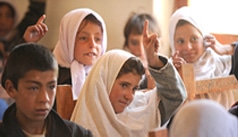
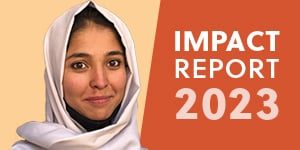

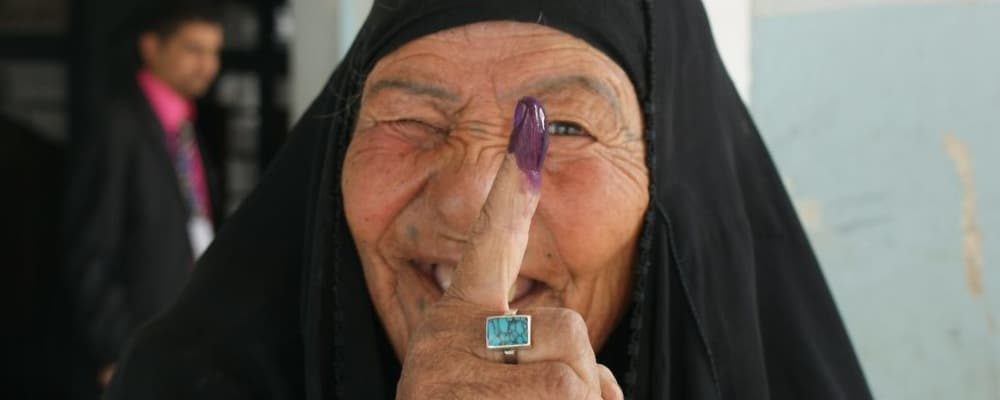


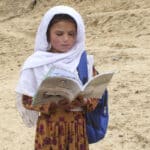
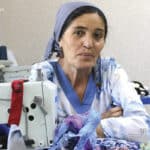




6 responses to “The Fight For Women’s Voting Rights”
So well written! Thank you for encapsulating these two histories and adding a bit about our own.
These are excellent articles, but I was surprised that the one on Pakistan did not include the assassination of Benazir Bhutto. Otherwise, very timely and informative.
Thank you.
These are excellent articles, but I was surprised that the one on Pakistan did not include the assassination of Benazir Bhutto. Otherwise, very timely and informative.
Thank you.
Very uplifting. Here in the US I often think about the rights of women,,,and all citizens,, and how those rights seem to be taken for granted, not actually appreciated. Our very Democracy seems taken for granted,,,as if we could never lose it,,,,as if it could never be ‘taken’ from us. What has happened in Pakistan and Afghanistan historically seems to be happening here; democracy crumbling.
Dear Dave,
It is so important to cherish our rights. Thank you for sharing your thoughts. Let us know if there are any other subjects you’d like to read about.
All the best,
Hannah White
Excellent and informative article.